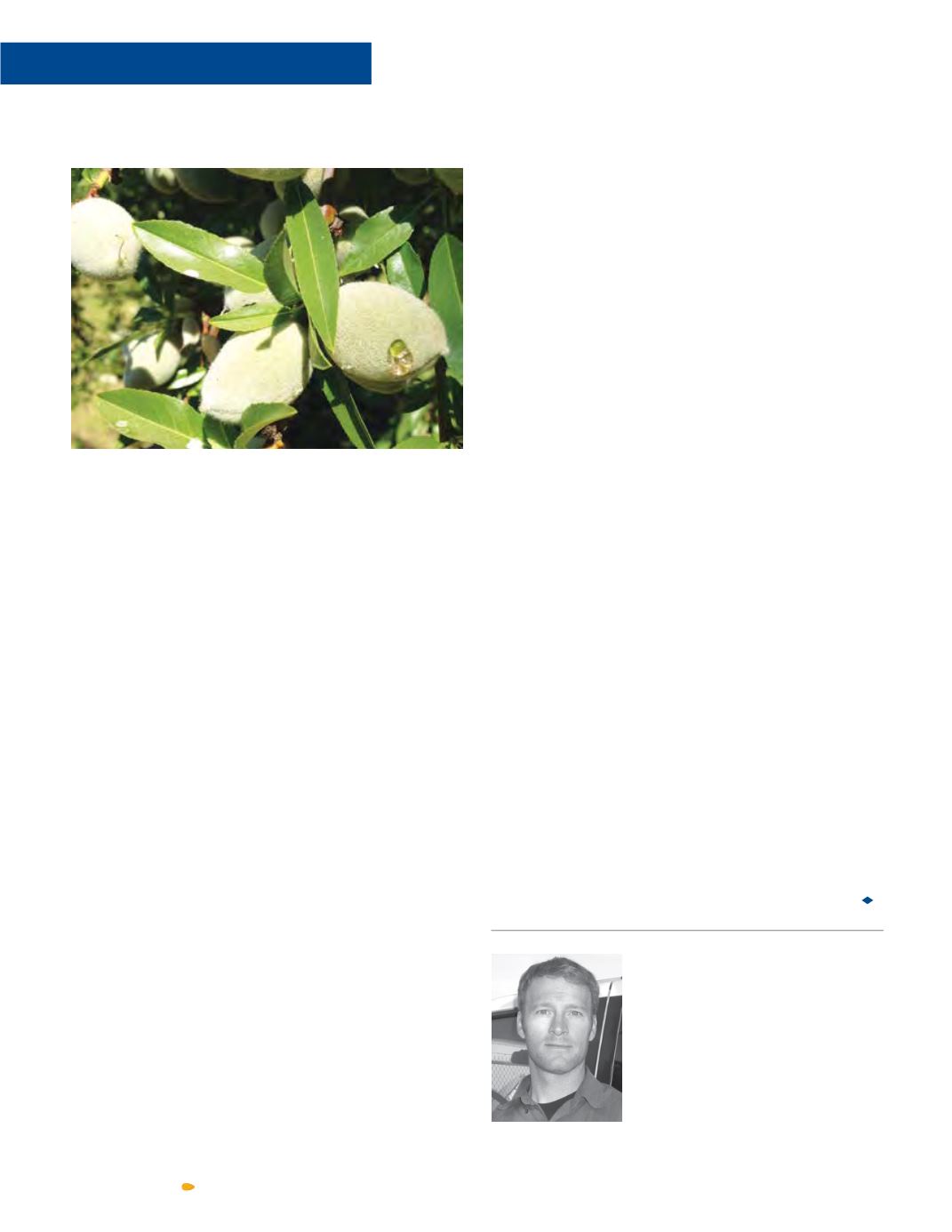
IN YOUR ORCHARD
Weed Control
Over the past several years, however, we have seen
an increase in summer emerging weeds that are either
glyphosate-resistant or are variably controlled with this
herbicide (e.g. lambsquarter, threespike goosegrass,
and junglerice). If present, try alternative broadspectrum
"burn-down" products such as glufosinate or paraquat.
Alternatively, a "two shot" pre-emergent program could
also be considered to stretch residual weed control into
the summer. If a spring applied pre-emergent product is
used, it must be applied when there is enough rain or
irrigation to aid in its incorporation. This may mean that it is
applied with the last rains of the spring or in micro-sprinkler
or solid-set irrigation systems. The highest label rate may
not be needed to provide effective control at this time of
year which may help reduce costs. More information can
be found on the IPM page under weed management.
Be careful with post-emergent herbicide spray
applications. Winds tend to be variable in the spring
which makes it difficult to apply material in a timely
fashion. Calibrate equipment, check nozzle orientation
and overlaps, and replace nozzles as needed to help
maintain proper spray particle size to maximize coverage
and minimize drift. Utilize surfactants, water conditioners,
and drift control agents to increase efficacy. Be cautious
when spraying around young trees as some herbicides
can cause damage. Generally, I suggest that spring
herbicide applications be made before cartons are
removed from two year old trees.
Irrigation System Maintenance
Within five years, most irrigation systems are not
distributing water to the standards in which they were
designed. This loss of distribution uniformity can be
due to many issues, but generally is a result of poor
maintenance. Micro-systems should be evaluated and
tuned-up in the spring before the water use increases
in the summer. This usually involved performing many
maintenance practices regularly. Check out the website
/ for more information.
Final Thought
Operations that are successful in achieving consistent, high
yields are spending about 60 to 80 percent of their effort
in managing their irrigation system and applications. This
includes taking soil, weather, and water quality variability
into account when irrigating. If yields aren't at levels that you
are expecting, spend time reviewing your irrigation schedule,
soil types, and system performance. Make sure that the
proper amount of water is being applied for the time of
the year. Perform the needed maintenance to make sure the
highest distribution uniformity possible and utilize the various
soil amendments to maintain rates of water infiltration.
Clear gumming exuding from the hull of the almond may indicate
feeding by leaf footed plant bug. If scraped away, a small hole
should be visible piercing through the hull into the developing
kernel.
David Doll,
UCCE Nut Crop
Pomology Advisor
3 2
A L M O N D F A C T S


